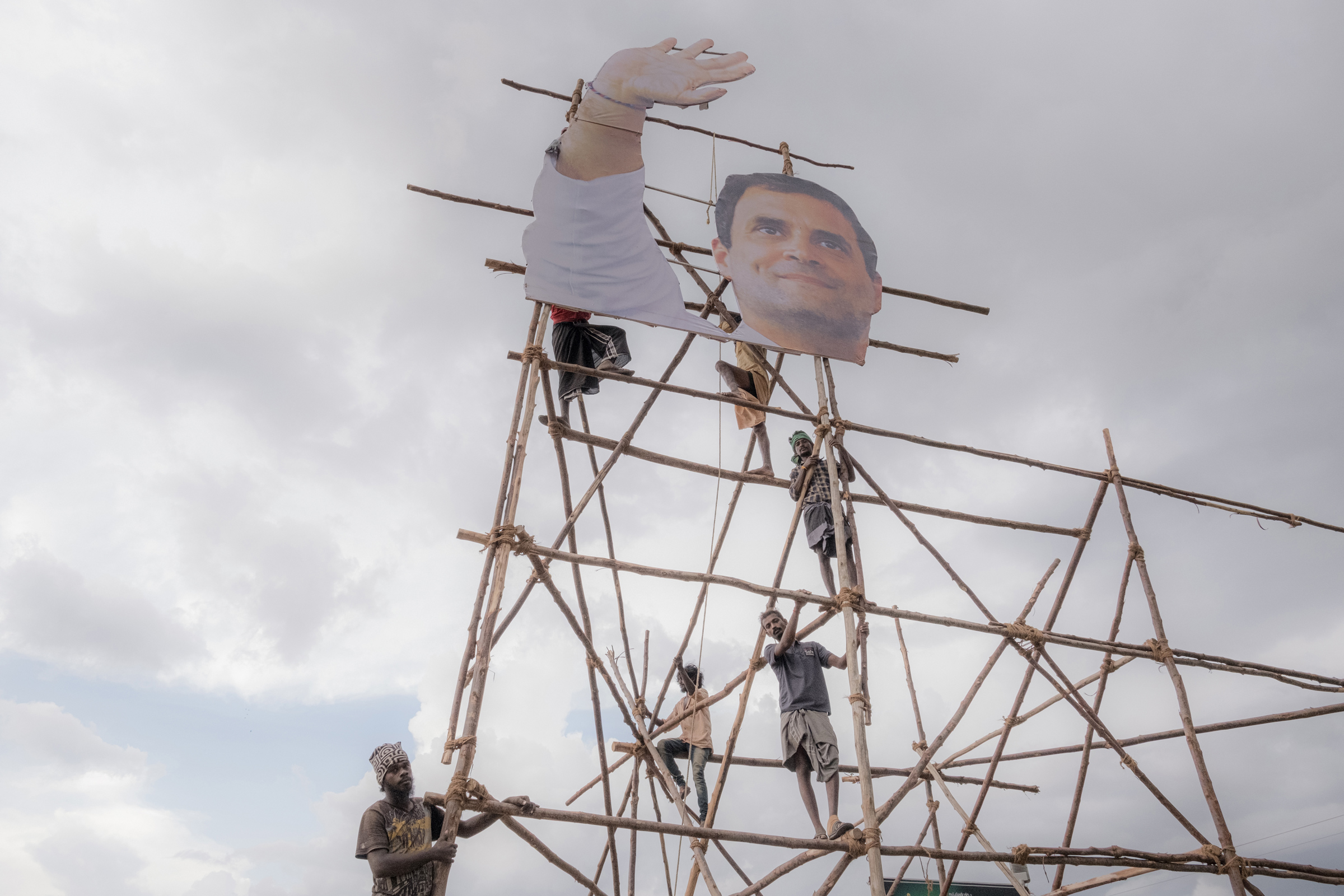During the early hours of Dec. 24, a crowd huddled together on the gravel highway by a metro station on the border of New Delhi and the satellite city of Faridabad, India. The harsh, unforgiving winter was living up to its ill reputation, and a thick layer of smog hung over the city. But anticipation and excitement abounded even in the darkness. It was the 108th day of the Bharat Jodo Yatra, a long, ambitious march across India whose title translates to “Unite India March.” Rahul Gandhi, the man leading it, would address the nation’s capital from the historic Red Fort later that day.
I watched the yatris, or marchers, from the sidelines under tricolor campaign posters hanging from electric poles. It wasn’t even 7 a.m. yet and the sun was still sleeping, but I’d already been warned to stay out of the way: “Don’t try to keep up with the marchers, they’re giddy with energy,” an organizer told me beforehand. While some geared up for Gandhi’s arrival to kick off the day’s events, others got their phones out, ready to record the frenzy.
Then there were those visibly stirred by what it all represented: “I have seen Rahul Gandhi’s grandmother and father serve our nation, but in this march, I see the great man that he is becoming,” Siddharth Singh, a 51-year-old marcher, told me with tears in his eyes.
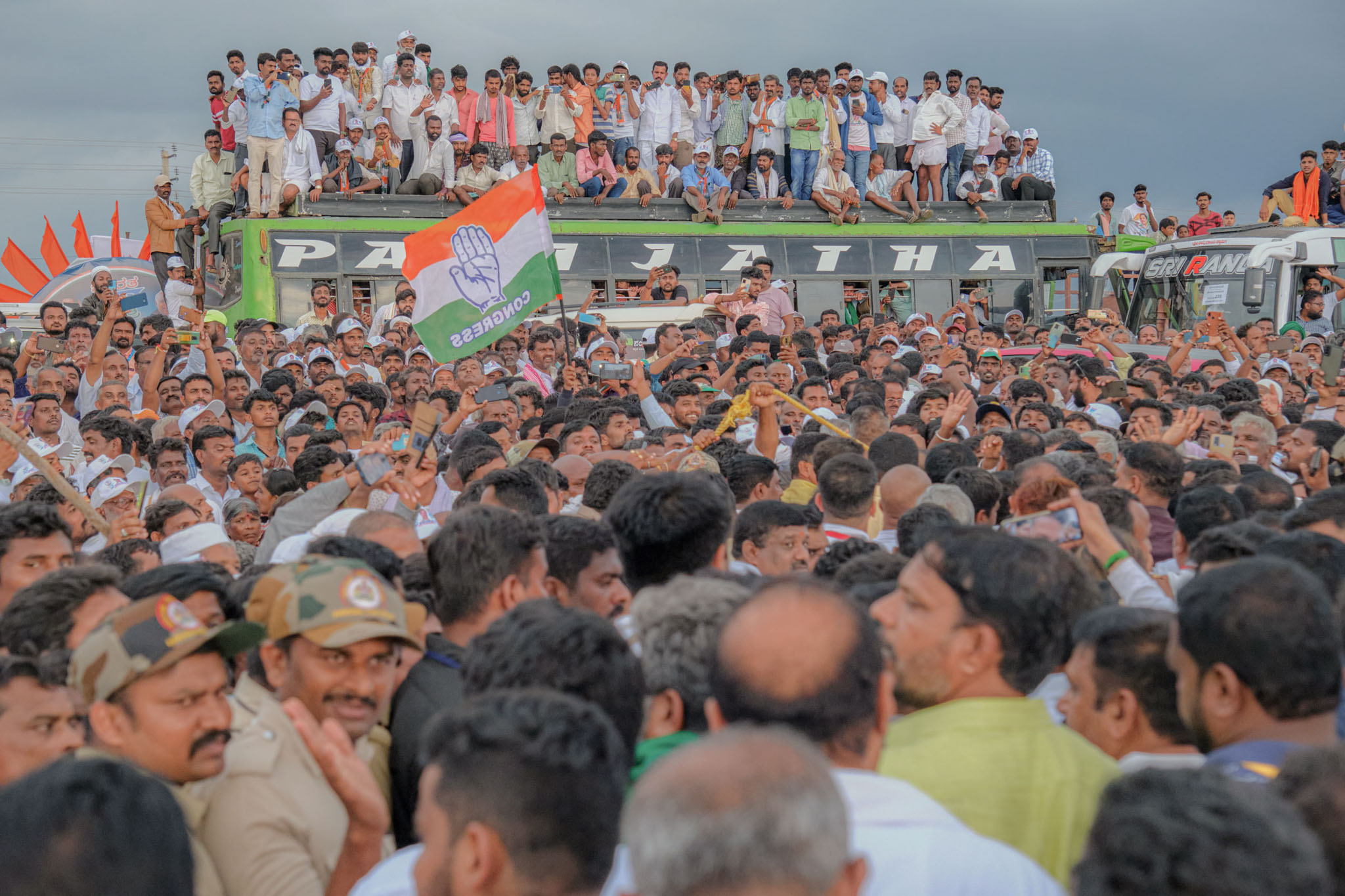
Gandhi bears no relation to the Indian freedom fighter Mohandas “Mahatma” Gandhi, but he was nevertheless born into a once powerful political family that controls the Indian National Congress, the country’s main opposition party. The Congress Party ruled over India for the majority of its 75 years of independence, but its popularity has waned drastically in the past few decades, steering the Bharatiya Janata Party (BJP) toward a landslide victory in the 2014 election. The current Indian Prime Minister, Narendra Modi, has remained in power since, winning re-election in 2019. He will run for a third term in the next election, which will be held by May 2024.
Read More: Why India Is Using Emergency Laws to Ban a Documentary About Prime Minister Modi
This march is a crucial test for India’s opposition movement to show whether the Congress Party can once again pose a legitimate threat to Modi and the BJP. It also comes at a time when Indians are increasingly polarized by politics, religion, and inequality under the BJP’s majoritarian, Hindu-nationalist vision for the country, which has resulted in the 2020 Delhi riots, the mishandling of the COVID-19 pandemic, rising inflation, high unemployment, and the passing of a new citizenship act that’s exclusionary to Muslims.
Although Gandhi stepped down as president of the Congress Party in July 2019, he still leads informally as a senior member. To engage with voters during the march, he repeats a simple message in press conferences: “In the market of hatred, I am opening a counter for love.”
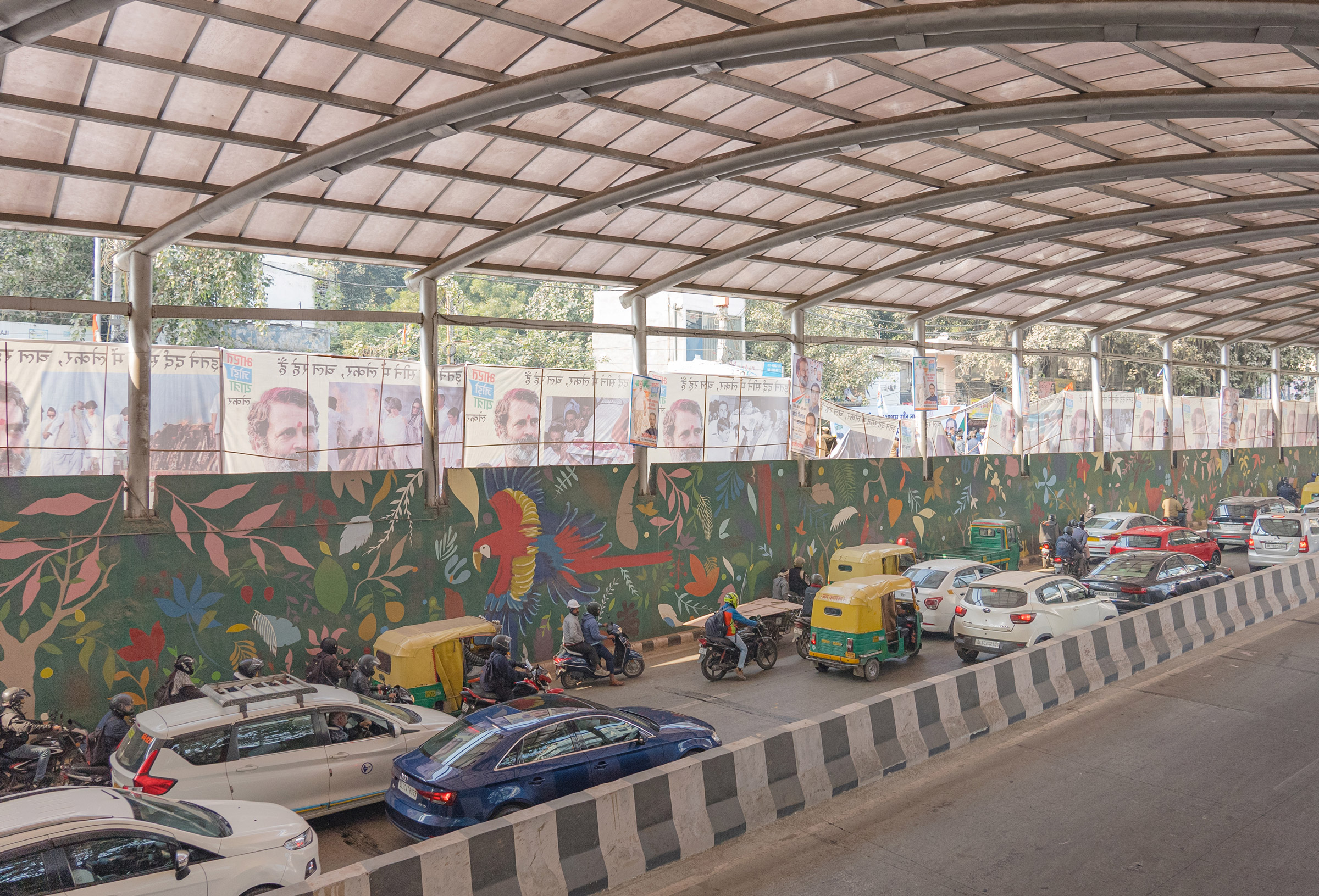
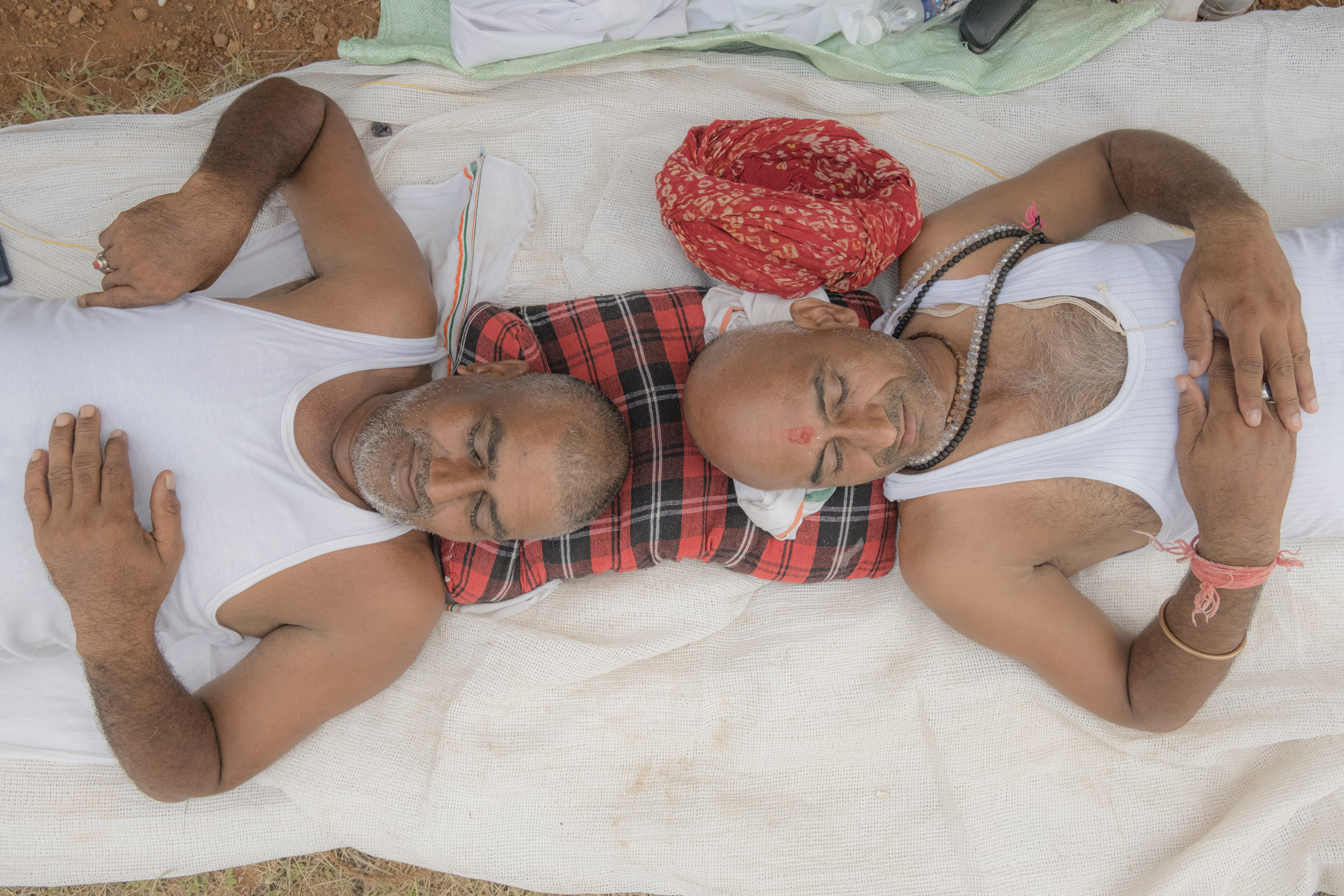
Since he first began marching in September, Gandhi has covered nearly 2,000 miles and 10 states across India. The march began in the tropical southernmost tip of Kanyakumari and will dissolve in the snowy Indian-administered territory of Kashmir at the end of January. Veteran Congress Party politicians are marching alongside Gandhi, while academics, public figures, and even Bollywood actors have made appearances in a show of support.


Walking with the people of India has historical resonance: yatra or padayatra, a Sanskrit word for pilgrimage, has long denoted a certain kind of mass political awakening. In 1915, Mohandas Gandhi toured India to better understand the plight of the nation after returning home from South Africa; in 1930, he once again marched 240 miles to protest against British rule. Since independence, other political pilgrimages have also taken hold of the Indian imagination—in 1983, former Prime Minister Chandra Shekhar undertook the Bharat Yatra, and in 1990, a young Modi fervently assisted BJP leaders as they walked the Ram Rath Yatra, laying down the foundation for the BJP’s rise to power.
Whether he succeeds in doing so, however, will only become apparent as election season looms.
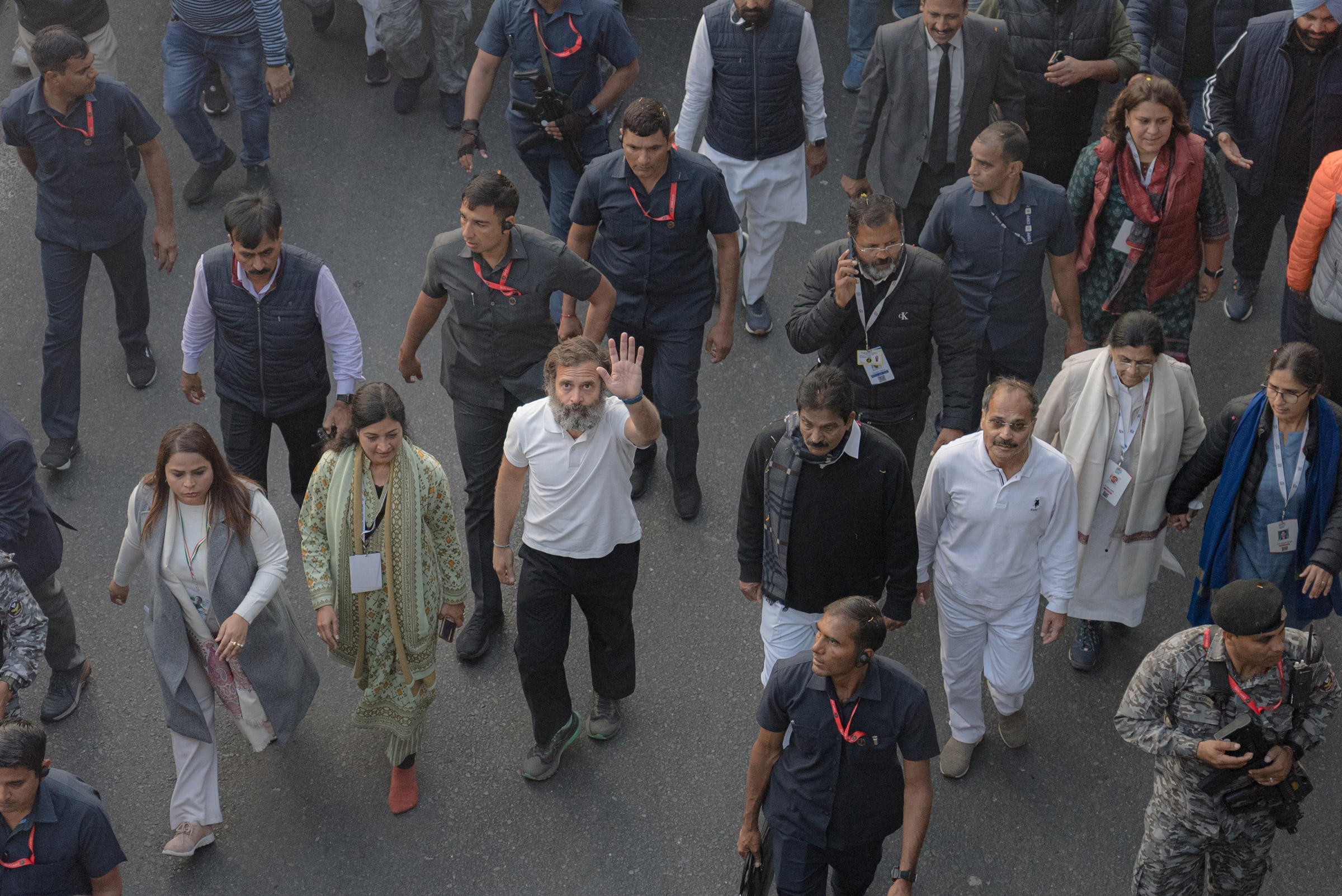
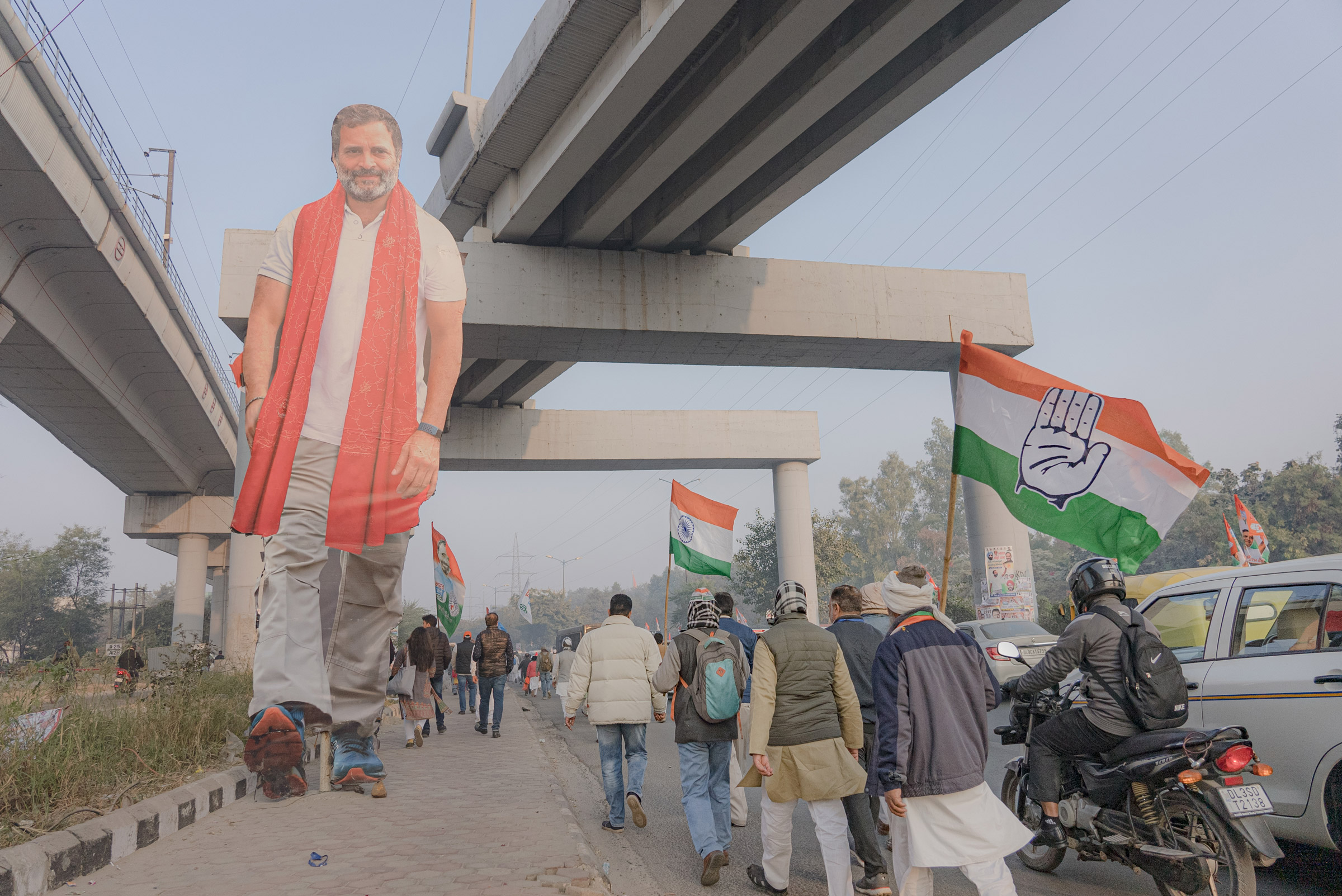
In Delhi that morning, the crowd first began to jostle and push at a few minutes past six. “Woh aa gaye (he’s here)!” someone shouted before a stampede was under way. Indeed, there was Gandhi—dressed in a white polo shirt and black track pants, with an ashy, unkempt beard growing longer by the day—charging ahead at breakneck speed in his trainers. He was kept at bay from the crowd, cordoned off by two long ropes and heavy security. Despite the warning, I couldn’t help but walk alongside the marchers, attempting to keep up with the sheer force of their lockstep. A big mistake. Before I knew it, I went tumbling down a pothole.
After a sobering stop for first aid, I rejoined the group just as the marchers were taking a lunch break under a sprawling tent inside an ashram. Congress Party politicians, flanked by reporters, answered questions about the effectiveness of the march. “What Mr. Gandhi is doing is reflecting the situation that India is in,” P. Chidambaram, who currently serves as a Member of Parliament and previously served as India’s Finance Minister, told me as he walked through the crowded tent, referring to communal divides.
Read More: Can the World’s Largest Democracy Endure Another Five Years of a Modi Government?
Outside, a loud crowd of supporters and onlookers waited for the march to resume. Among them was 58-year-old Asha Darmwal, a housewife who lives in the neighborhood. “I’m the aam junta [the common man], not from any political party,” she introduced herself. But that day, Darmwal had awakened at 5 a.m. and come to the streets with her husband in the hopes of meeting Rahul Gandhi. “He’s a gem, look at the mammoth journey he’s undertaking on foot to help our country,” she said. Her husband had already returned home after being put off by the crowds, but Darmwal wasn’t planning on going anywhere.
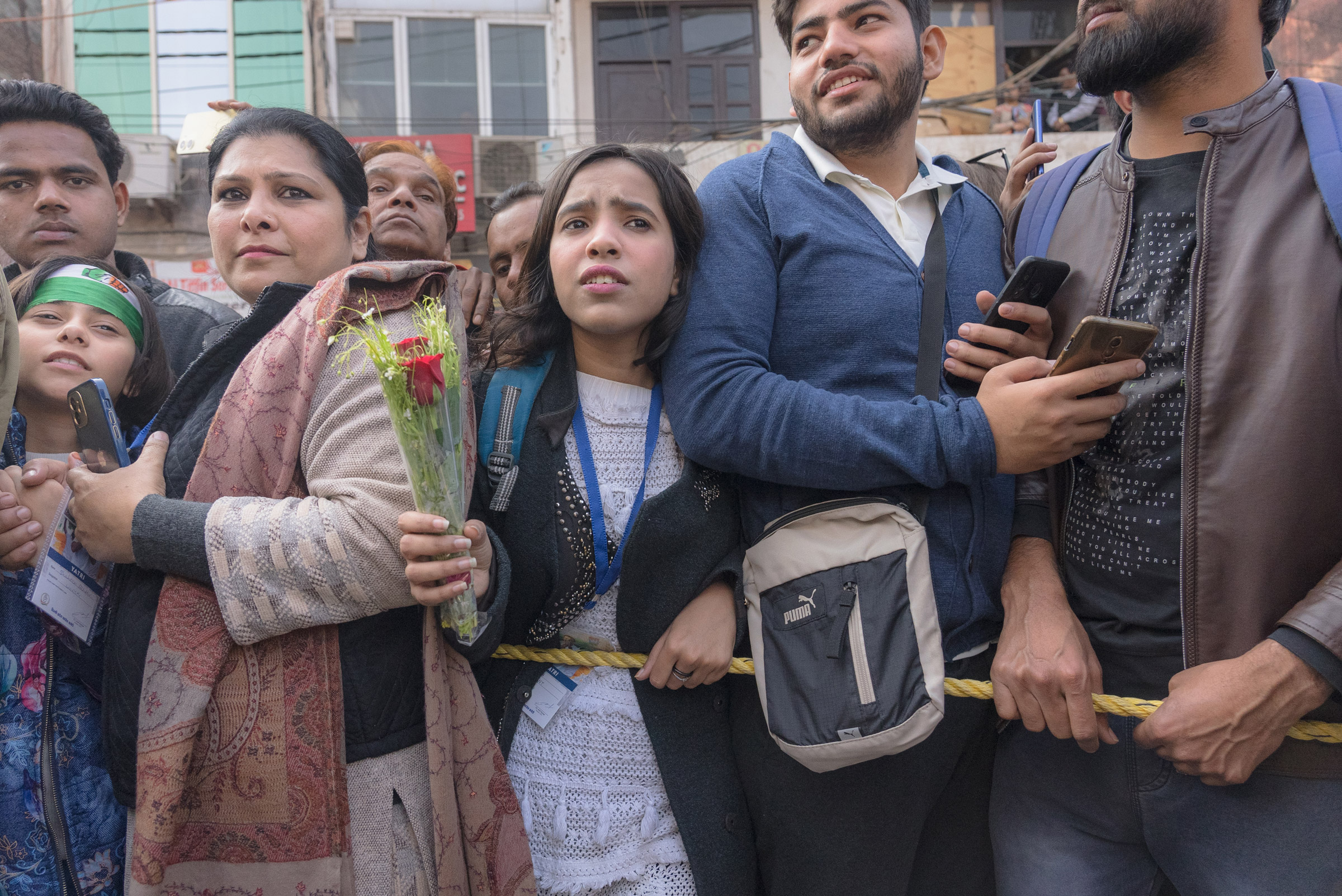
Inside the tent, KK Shastri, a 35-year-old Hindu monk, told me that he was proud to belong to the Congress Party. To him, Hinduism has never espoused religious intolerance the way he believes the BJP does. “Politics and religion shouldn’t mix, because every man deserves to have a vote and a god,” he said.
Similarly, 27-year-old Anulekha Boosa from Karimnagar, a city in the Indian state of Telangana, has been marching since Day One. The first in her family to get involved in politics, Boosa, who now leads the National Students’ Union of India, said she became a Congress Party member in 2014 because of the party’s embrace of secularism.
“I was brought up to believe that India is unity in diversity, but the BJP’s policy has been to divide and rule,” she said, taking a bite from her plate of rice and lentils while resting her bare feet. To walk all this way hasn’t been easy for Boosa as a single woman—oftentimes she has felt nervous, exhausted, and unwell. Despite the challenges, it’s her father who has encouraged her to keep going. “He told me, ‘You might be the last person to walk behind Gandhi, but don’t give up because you’re part of history in the making,’” she recalled.
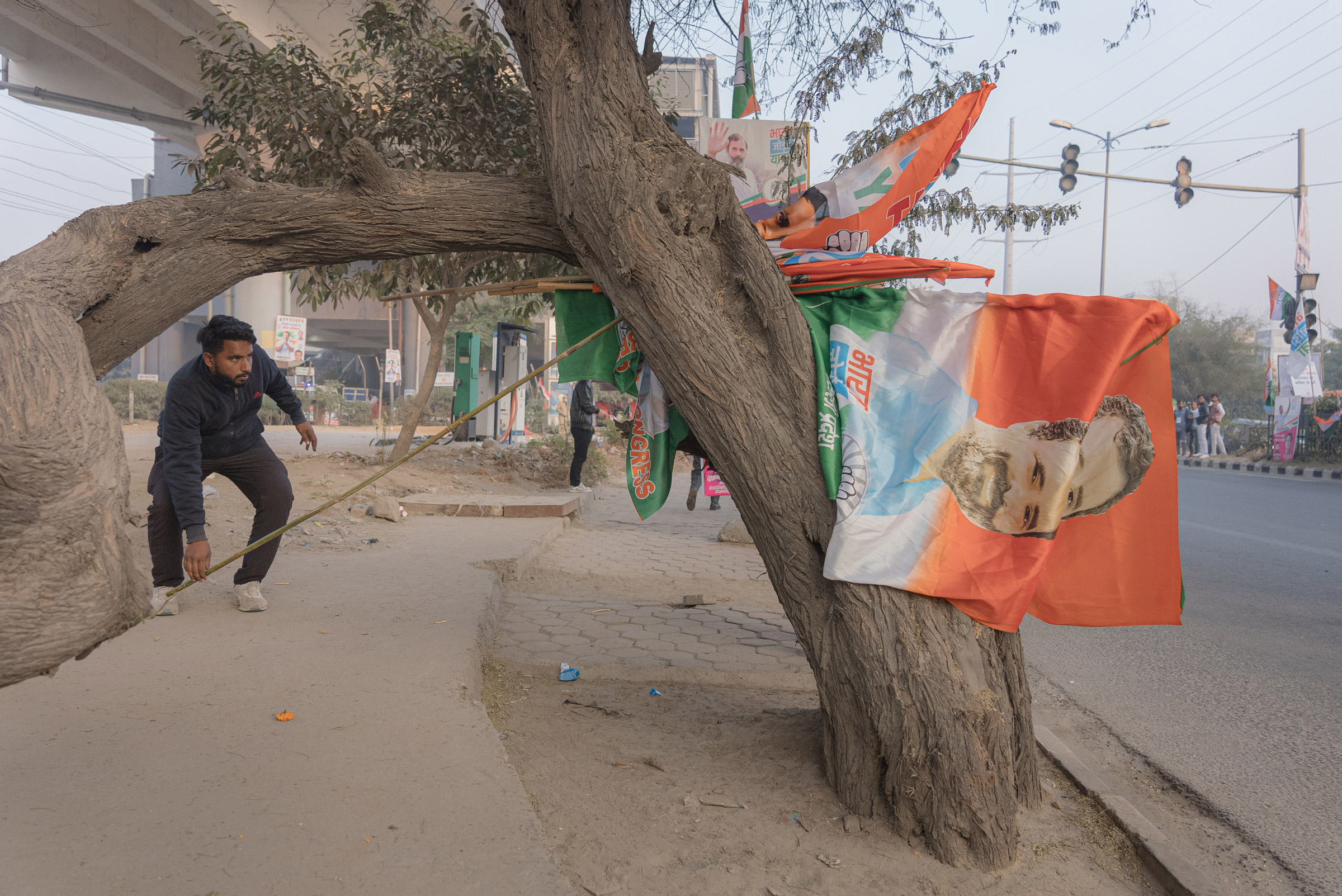
Even Boosa doesn’t expect the march to lead to significant political change. Nevertheless, it has given her a chance to see the real India—one that she had only read about in textbooks at school. “Every day is a new experience, every state is politically different, and every person’s views are different,” she said.
As he walks through the villages and towns of several Indian states, bystanders are compelled to witness Gandhi’s blistered feet and talk of uniting a polarized country. “There’s success in terms of mobilization because historically, long marches have done well to connect with people,” Shruti Kapila, a professor of Indian history and politics at the University of Cambridge, tells me over the phone. “But mobilization is only half the battle.”
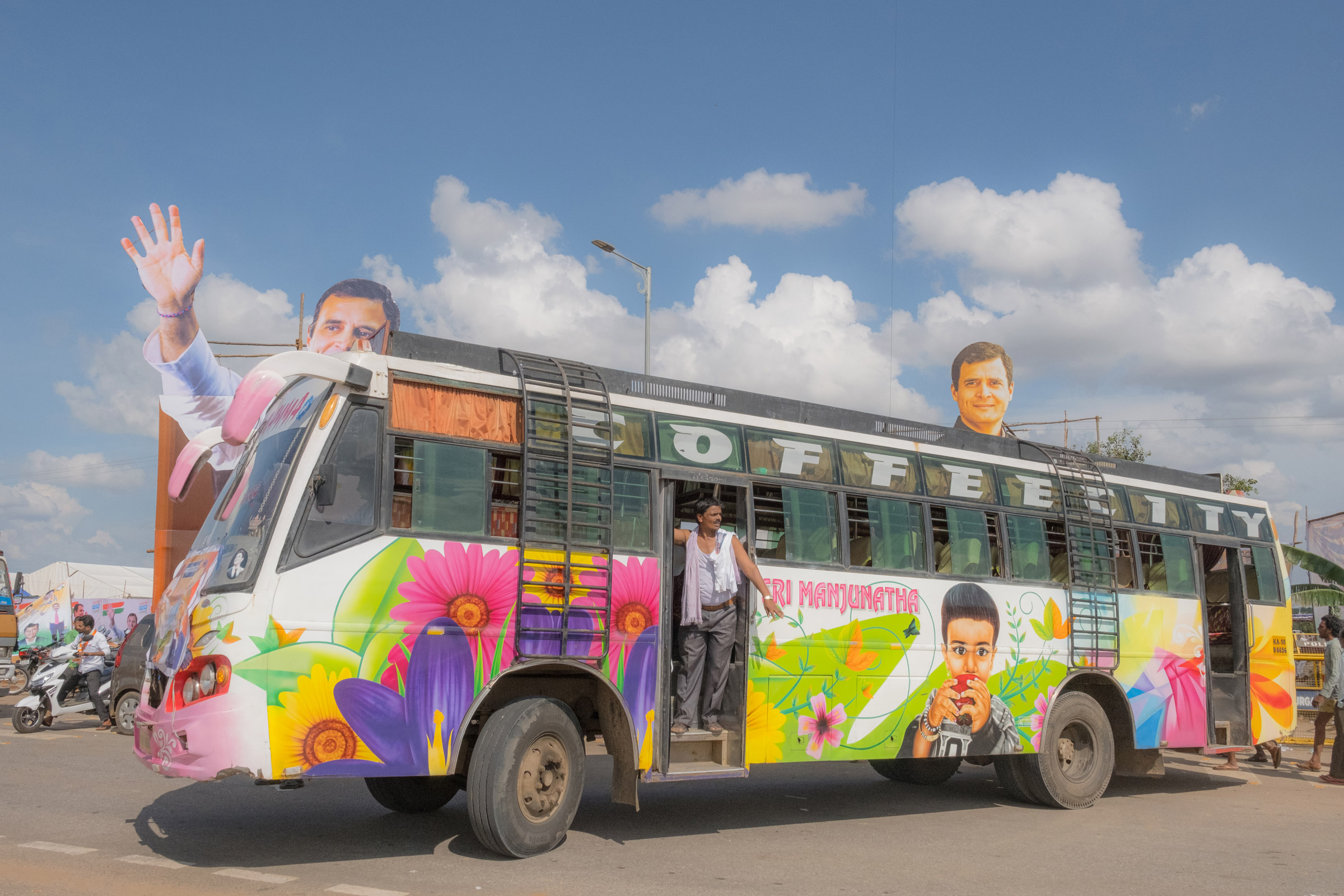
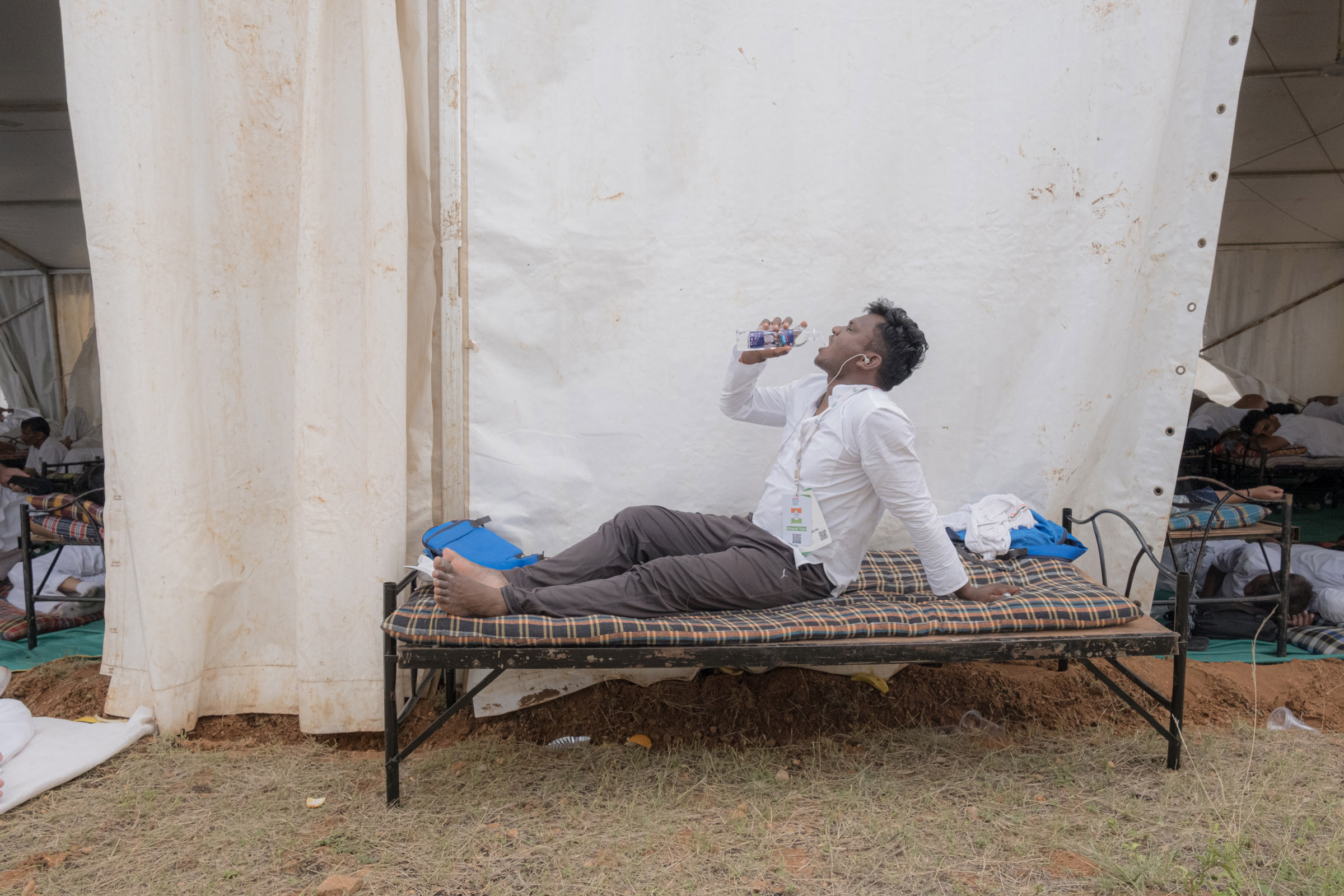
Talk alone will not be enough to change the minds of the many Indian voters who feel disillusioned by the Congress Party, which suffered several political scandals and infighting during its time in power, including a major telecoms scandal and a bribery row within the army in 2012. Currently, the party rules only three of India’s 28 states, holding down a mere 53 of the 543 elected seats in Parliament. In October, when it elected Mallikarjun Kharge as its first non-Gandhi president, experts described the move as an attempt to shed the image of family control by the Gandhis.
“Right now, we simply lack any evidence that Bharat Jodo Yatra has yielded electoral rewards,” Milan Vaishnav, South Asia program director at the Carnegie Endowment for International Peace, tells TIME. He refers to recent state elections in Himachal Pradesh (which Congress narrowly won) and in Gujarat (which it decisively lost). “To complicate matters, the yatra touched neither of the states, making it difficult to draw inferences,” he adds.
The BJP has also largely succeeded in its efforts to paint Rahul Gandhi as “Pappu” (a dullard)—the entitled beneficiary of nepotism who’s out of touch with middle-class India—a stark contrast to the Prime Minister’s own lower-caste, self-made image. “For more than a decade there has been a lot of popular anger against the established elite, not just in India, but globally,” says Kapila. “And [Gandhi] was vilified for what that idea embodied.”
Vaishnav believes the march has certainly helped to counter this. “What it appears to have done is rehabilitate Gandhi’s image, to energize the Congress cadre, and to wrest away some part of the media narrative from the dominant BJP,” he says.
In spite of their reservations, pundits and critics have been surprised by the ground success of the yatra, some of which is now reflected in polling data. In the southern state of Karnataka, support for the Congress Party went up from 38.8% in 2022 to 59.7% after the march. Similarly, Madhya Pradesh has seen an increase in support from 45.7% in 2022 to 56.3% this year, according to CVoter, an independent data aggregator.
To Kapila, the critical point of the march is that Congress has now put forward “a political agenda with a clear ideological stand against Modi.” This means that come next election, Indians will have to choose between two national visions. “That’s the touchstone of success for this march,” she says.
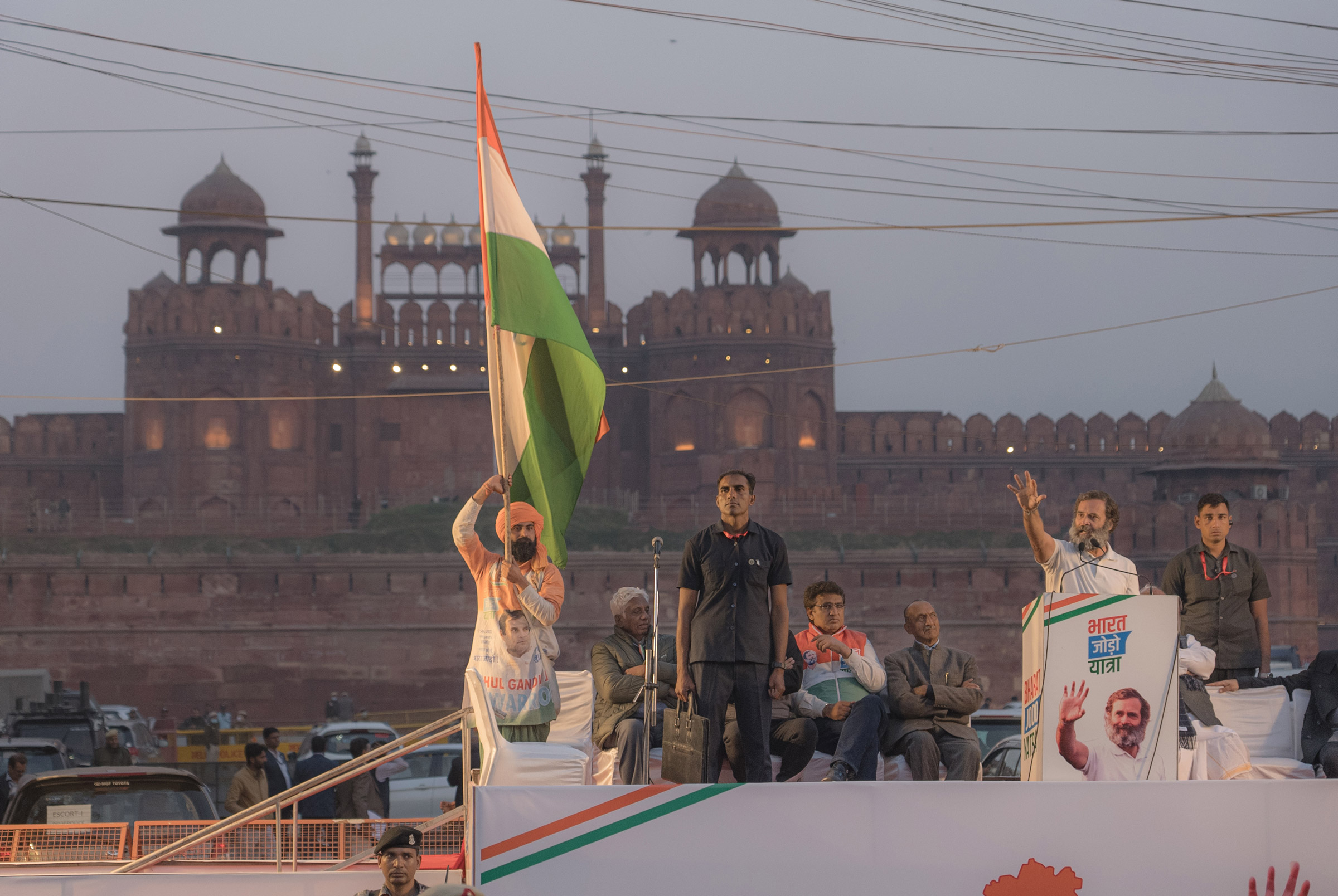
But Vaishnav has a more critical view. “At the end of the day, modern political parties rise or fall based on electoral success,” he contends. “Raising social consciousness is valuable, but there has to be a vehicle to translate this into political action.”
During the march in Delhi, an organizer offered to take me inside the ring to walk with Gandhi for a few minutes—but not without another warning. “Just as long as you can keep up with the pace,” he said, “And when I say ‘Go,’ you duck.”
Feeling more prepared to walk with the marchers this time around, I braced myself for the commotion. The crowd was now three times the size it had been in the morning; the adrenaline rush was hard to contain. After about 10 minutes of walking, the organizer grabbed my hand and pulled me under the rope. And then I was walking alongside Gandhi, who politely shook my hand.
“Quite a turnout!” I told him. He smiled and nodded. “We’re working hard,” he said, and kept walking.
—With reporting by Leslie Dickstein
More Must-Reads from TIME
- Cybersecurity Experts Are Sounding the Alarm on DOGE
- Meet the 2025 Women of the Year
- The Harsh Truth About Disability Inclusion
- Why Do More Young Adults Have Cancer?
- Colman Domingo Leads With Radical Love
- How to Get Better at Doing Things Alone
- Michelle Zauner Stares Down the Darkness
Write to Astha Rajvanshi at astha.rajvanshi@time.com
